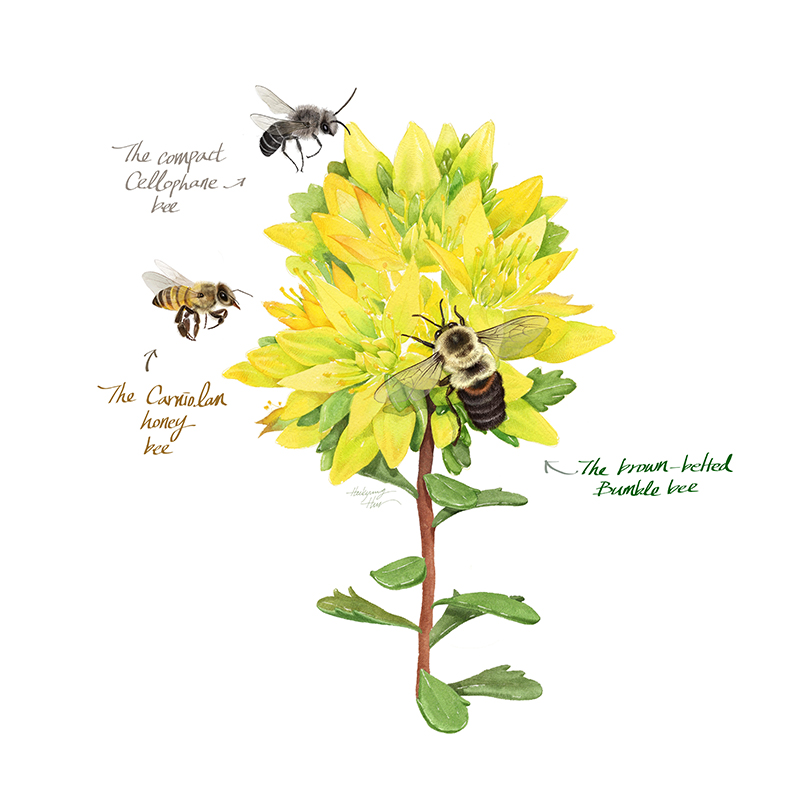FIT’s hives are part of a citywide effort to increase the local bee population. Guillermo Fernandez, founder and executive director of the Honeybee Conservancy, and keeper of the hives, gives us the scoop on our fuzzy, buzzy friends below.

Did you know?
1. Over its lifetime, a bee produces about half a tablespoon of honey.
2. In New York State, 54 percent of bees live underground. Honeybees live in the hollows of trees, which man-made hives replicate.
3. Unlike many other species of bees, honeybees are communal and cannot survive on their own.
4. Honeybees don’t hibernate in winter; to stay warm, they cluster into a ball, with the queen in the middle.
5. Honeybee society is matriarchal. The males’ only role is to fertilize the queen. Every fall, the worker bees, which are female, evict all the drones, which are male, leaving them to die.
6. Honeybees will fly as far as three miles from the hive. Fernandez says FIT is part of a “pollinator corridor” that stretches from the High Line to Madison Square Park, with rooftop gardens along the way that provide resting and feeding spots for bees.
7. Honey is harvested twice a year. Spring honey is a blond color, and fall honey is a darker cognac shade, because the nectar in autumn flowers tends to be darker and more concentrated.
8. The Honeybee Conservancy stocked FIT’s hives with Carniolan honeybees, because the queens are extremely fecund, laying 1,500 eggs per day. The species is also hardy and more likely to forage in cool temperatures, down to about 45 degrees.
9. One in three bites of our food is dependent on bee pollination. While birds, bats, and other insects also pollinate flowers, none are as effective and versatile as bees.
10. The U.S. has fewer managed beehives now than in 1945.
Featured image: Fernandez was excited to spot two additional species of bees on FIT’s rooftop besides the Carnolian honeybee (Apis mellifera carnica) in the campus hives: the brown-belted bumblebee (Bombus griseocollis) and the cellophane bee (likely Colletes compactus), named for the cellophane-like material it uses for its hive instead of wax. Heekyung Hur MA ’08, created this illustration for Hue magazine. Check out this stop-motion video of her process.
